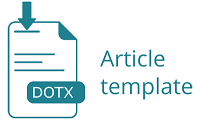PEMBERDAYAAN POSYANDU DALAM PENCEGAHAN DEMAM BERDARAH DENGUE
DOI:
https://doi.org/10.32807/jpms.v7i1.1728Keywords:
DHF, DHF Control, PosyanduAbstract
Tempos Village is one of 11 villages/sub-districts in Gerung District, West Lombok Regency with the highest number of dengue fever cases and some have even died. The number of dengue fever cases in the Gerung Community Health Center working area in 2022 was 43 people with a Larvae Free Rate (ABJ) of 91.1%. The number of dengue fever cases in Tempos village in 2022 is 6 cases with an ABJ of 89%. At the beginning of January 2023, there was 1 case of death in Tempos village. The problem in Tempos village is the lack of knowledge and skills as well as motivation of the target audience, namely Posyandu women and health cadres in Tempos village regarding dengue fever, prevention efforts as well as early treatment of infected residents and vector control with natural ingredients and ABJ < 95%. The solution offered in the implementation of the Community Service (PKM) Community Partnership Program (PKM) for empowering Posyandu in preventing dengue fever in Tempos village in the working area of the Gerung Health Center, West Lombok Regency is with promotive and preventive efforts. The results that have been achieved are the implementation of PKM starting from obtaining permits and observations, socialization and counseling in Tempos village and training at the Gerung Community Health Center. Health cadres can campaign for the use of anti-mosquito plants and larvae-eating fish among mothers at Posyandu. Every Friday village officials together with health cadres and the community carry out 3 M plus activities and the 1 house 1 jumantik movement. To ensure the continuity of the program, anti-mosquito plant seeds have been handed over along with pots, larvae-eating fish seeds and flashlights to be used in larvae surveys to the village which are then handed over to health cadres from Posyandu representatives in each hamlet.
References
Dikes Provinsi NTB (2021) ‘Jumlah Kasus Demam Berdarah Dangue (DBD) di Provinsi NTB Tahun 2021’, Dikes Provinsi NTB. Available at: https://data.ntbprov.go.id/dataset/jumlah-kasus-demam-berdarah-dangue-dbd-di-provinsi-ntb.
Dinkes Provinsi NTB (2020) ‘Kasus Demam Berdarah Dengue (DBD) di Provinsi NTB Tahun 2020’.
Harapan, H. et al. (2019) ‘Epidemiology of dengue hemorrhagic fever in Indonesia: analysis of five decades data from the National Disease Surveillance.’, BMC research notes, 12(1), p. 350. doi: 10.1186/s13104-019-4379-9.
Kemenkes RI (2022) ‘Kemenkes integrasikan dan revitalisasi pelayanan kesehatan primer’. Jakarta: Kemenkes RI. Available at: https://kesmas.kemkes.go.id/konten/133/0/kemenkes-integrasikan-dan-revitalisasi-pelayanan-kesehatan-primer.
Kularatne, S. A. and Dalugama, C. (2022) ‘Dengue infection: Global importance, immunopathology and management.’, Clinical medicine (London, England), 22(1), pp. 9–13. doi: 10.7861/clinmed.2021-0791.
Millati, F. F. and Sofian, F. F. (2018) ‘Review Artikel: Kandungan Senyawa Minyak Atsiri Pada Tanaman Pengusir Nyamuk’, Farmaka, 16(2), pp. 572–580.
Organización Mundial de la Salud (2014) ‘Dengue and severe dengue’, WHO Fact Sheet.
Pangesti, M. Della, Wahyudi, Y. and Susila, W. D. C. (2021) ‘Efektifitas pemberian ikan cupang (Betta splendens) dalam menurunkan jumlah jentik sebagai pencegahan DBD di Desa Talok Kecamatan Turen’, Health Care Media, 5, pp. 77–87.
Rahmi, R., Rahmi Amir and Usman (2018) ‘Biokontrol Ikan Pemangsa Jentik Dalam Pemberantasan Vektor Nyamuk Penyebab Demam Berdarah Dengue (DBD) di Kota Pare Pare’, Jurnal Ilmiah Manusia Dan Kesehatan, 1(3), pp. 265–271. doi: 10.31850/makes.v1i3.112.
Salim, M. and Satoto, T. B. T. (2015) ‘Uji Efektifitas Atraktan pada Lethal Ovitrap terhadap Jumlah dan Daya Tetas Telur Nyamuk Aedes aegypti’, Buletin Penelitian Kesehatan, 43(3), pp. 147–154. doi: 10.22435/bpk.v43i3.4342.147-154.
Syamsiah, S. et al. (2022) ‘Pengenalan Tanaman Anti Nyamuk dalam Pencegahan Demam Berdarah’, INOVASI: Jurnal Hasil …, 2(1), pp. 44–51. Available at: https://ojs.unm.ac.id/inovasi/article/view/34131.
Tatontos, E. Y., Getas, I. W. and Urip, U. (2022) ‘Effectiveness of the Combination of Lethal Ovitrap Attractant of Local Organic Materials and Natural Larvicides in Dengue Hemorrhagic Fever Endemic Areas’, Jurnal Penelitian Pendidikan IPA, 8(6), pp. 2961–2968. doi: 10.29303/jppipa.v8i6.2448.
Vitaningtyas, Y. et al. (2019) ‘Pengolahan Serai Sebagai Tanaman Obat Pengusir Nyamuk Bersama Anak-Anak Di Pemukiman Pemulung Blok O Yogyakarta’, Jurnal Pengabdian Kepada Masyarakat, 2(1), pp. 14–23. Available at: http://e-journal.usd.ac.id/index.php/ABDIMAS.
Yasir Arafat (2023) ‘328 warga Lombok Barat terkena DBD sejak Oktober 2022, meninggal 2 orang’, Kicknews Today.
Zen, S. (2012) ‘Biokontrol Jentik Nyamuk Aedes aegypti Dengan Predator Ikan Pemakan Jentik Sebagai Pendukung Materi Ajar Insekta’, BIOEDUKASI (Jurnal Pendidikan Biologi), 3(1). doi: 10.24127/bioedukasi.v3i1.206.
Downloads
Published
How to Cite
Issue
Section
License
Copyright (c) 2025 Jurnal Pengabdian Masyarakat Sasambo

This work is licensed under a Creative Commons Attribution-NonCommercial 4.0 International License.
Copyright Notice
The author who submits the manuscript does so with the understanding that if accepted for publication, the copyright of the article will be submitted to the Jurnal Kesehatan Prima Unit Research and Community of Polytechnic of Mataram as the publisher of the journal.
Copyright includes the exclusive right to reproduce and transmit this article in all forms and media, including reprints, photographs, microfilms, and other similar reproductions, as well as its translations. Reproduction of any part of this journal, its storage in the database and its transmissions by any form or media, such as electronic, electrostatic and mechanical copies, photocopies, recordings, magnetic media, etc. shall be permitted only by written permission of the Jurnal Kesehatan Prima Unit Research and Community of Polytechnic of Mataram.
The Jurnal Kesehatan Prima Unit Research and Community of Polytechnic of Mataram, Editor In Chief and Team Editor strive to ensure that no data or statements are false or misleading, published or published. in the journal.
Â
Â
Every accepted manuscript should be accompanied by "Copyright Transfer Agreement" prior to the article publication.
Â





